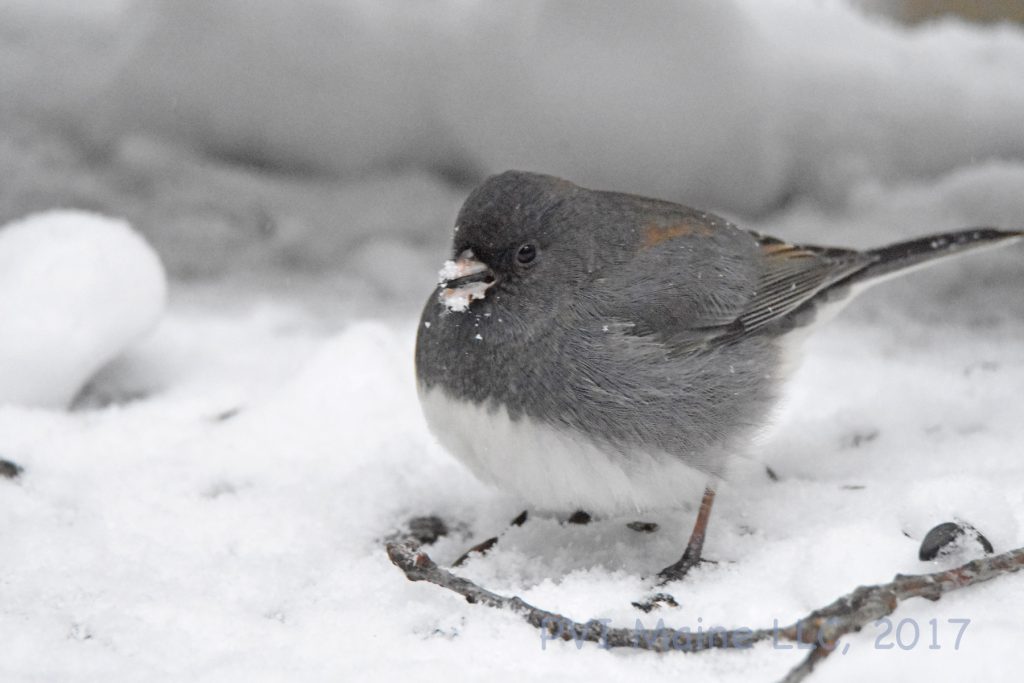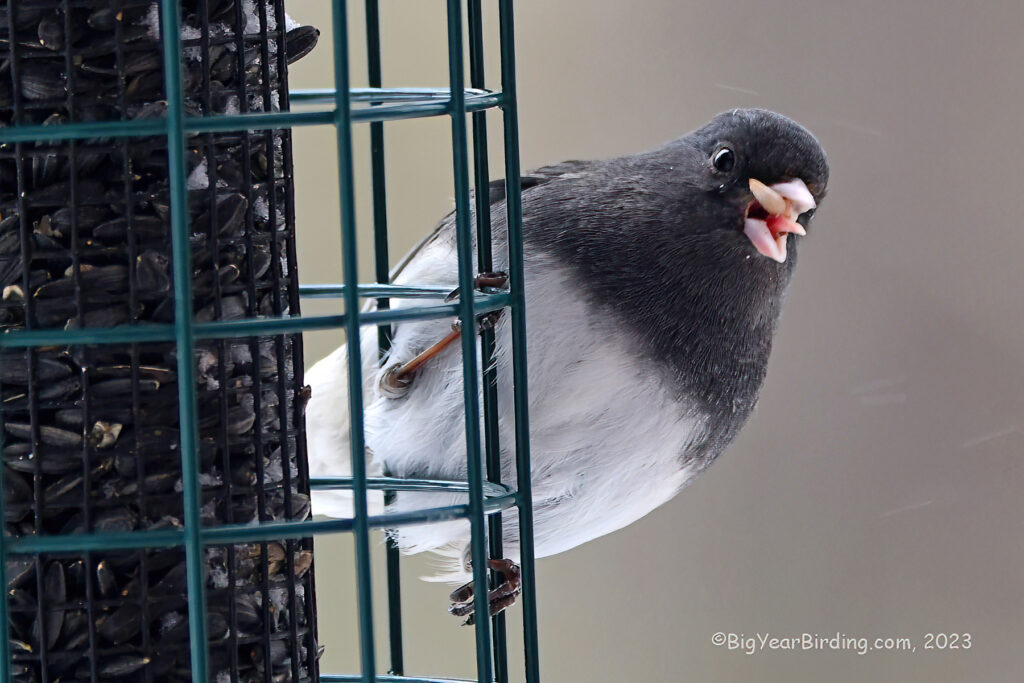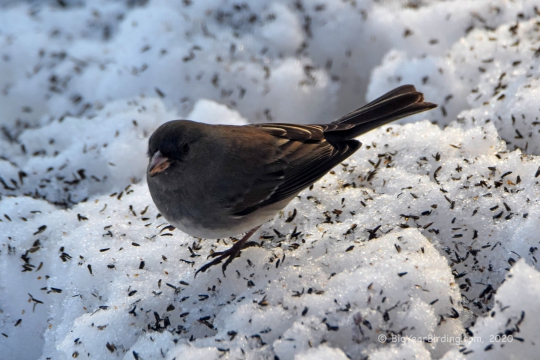
The Dark-eyed Junco (Junco hyemalis) is a small sparrow-like bird found across North America. These birds measure around 5.5-6 inches in length and weigh about 0.5-0.8 ounces. They have a rounded body, short tail, and a conical bill. The Dark-eyed Junco is a sexually dimorphic bird, with males having darker plumage than females. They have a distinctive white belly and gray upperparts, with a contrasting black or brown hood on their head.

One of the most distinguishing field marks of the Dark-eyed Junco is their white outer tail feathers, which are visible when they fly. They also have pink or orange bills, depending on the subspecies, and white wing bars. During the breeding season, males have a more pronounced hood that extends down their neck, while females have a less distinct hood. Juvenile Dark-eyed Juncos resemble females but have streaked underparts.
Dark-eyed Juncos are migratory birds, and their breeding range covers most of North America, from Alaska and Canada to the southern United States. During the winter, they migrate to the southern United States and Mexico, and some even travel as far south as Central America. The timing of their migration varies depending on their location, but most birds start to move south in late summer or early fall and return north in early spring.
In their breeding habitats, Dark-eyed Juncos prefer to live in coniferous forests, mixed forests, and forest edges. During the winter, they can be found in a variety of habitats, including suburban areas, parks, and gardens. They are often seen foraging on the ground, using their conical bills to search for seeds and insects. They also eat berries and fruit when available.

Overall, the Dark-eyed Junco is a familiar and widespread bird across North America. Their distinctive markings, seasonal migrations, and preference for forested habitats make them a fascinating bird to observe and study.
